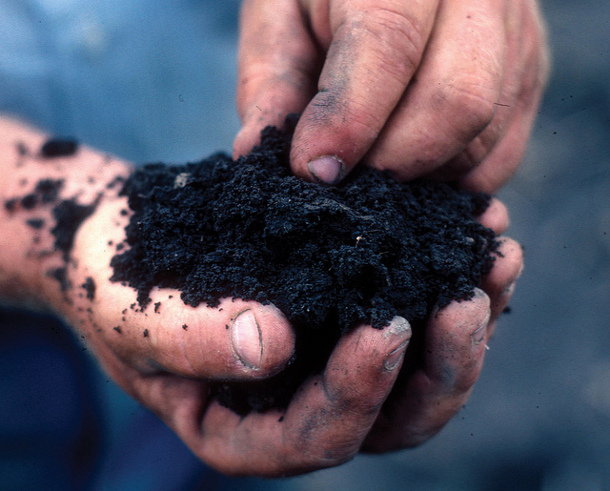Alex Shigo, one of the most famous plant biologists and fathers of arboriculture, is widely credited with making huge improvements to standard industry practices. One of his famous sayings was an exhortation to “touch trees.” I’ve adapted this to my own related specialty, urban trees and soils, which is why I often tell landscape architects and other designers to “touch the soil” (apologies to Alex). Both Alex and I literally mean go out and touch trees and soil; get your hands dirty; become intimate with the things we are supposed to be expert about.
Most landscape architects, for the majority of their projects, will not be able to afford to hire a soil scientist or plant specialist. These basic skills should be embedded into our professional training and interest. We should not have to bring in an expert for the average soil and plant problems we face. We must become experts ourselves – this is not an insurmountable goal. We become expert in part by touching soil and trees.
There is a common public perception of landscape architects as being experts on green and growing things. It is rare to see any plans coming out of a landscape architecture office that don’t include plants on them. Award-winning projects especially often seem to contain an element of green. In my experience, however, there are many landscape architects who are not knowledgeable about plants and soils, even on a basic level. Visit many of those award-winning sites a few years after they were built and you may find struggling or dead trees and plants. Still, whether we think of ourselves as such or not, we are in the business of designing with plants.
We are also in the business of construction – in other words, getting landscapes built. We have to understand and influence the construction process in order to create impactful, successful designs. Every decision we make determines the fate of the trees and other plants that are included on the site. As such, designing sites for trees is not just about species selection, details, or specifications. Nor is it simply about designing sites that look great the day, month, or year that they are completed. It is about creating landscapes that can function and thrive for many years and decades to come.
For this to happen, trees must be integrated in the built environment in ways they have not been in the past. Planning that acknowledges the future growth, shade, and spread of the tree must be accounted for – including all of the attendant benefits. Planting the easy places first is a great start, as is selecting the right tree for the right place. But we can’t stop there; we must also make the place right for the tree.
Large, healthy trees are essential parts of sustainable, vibrant, high-functioning landscapes. More than ever, cities and towns across North America and the world are emphasizing the value of their urban forests, but design solutions to support quality trees is still largely inadequate. To achieve a health, diverse population of trees in cities, we will have to invest in an environment that can support them. And there is no denying that it requires an investment, but it may not be as much as you think. When conducting any analysis of the cost of improving your urban forest, you must consider the extremely positive effect that large trees have on rental and sale prices of homes, consumer spending behavior, calmer and quieter traffic, and improved air and water quality – all of which increases exponentially as trees mature and grow.
As landscape architects, many of the design choices and specifications that set urban trees up for success or failure begin with us. We have the power to educate ourselves – and then our clients – about the value and importance of growing trees that look like the beautiful ones we sketch on our plans. We can influence policies that favor providing trees with adequate amounts of soil, which has a direct influence on the ultimate size of the tree. We can create lasting landscapes that draw people and nature together in powerful and sustaining ways. So please, touch the soil. That is where healthy urban forests begin.
James Urban, FASLA, is an expert in urban trees and soils. He is the author or the book Up By Roots: Healthy Trees and Soils in the Built Environment.
Top image Flickr credit: NRCS Soil Health






Jim, this is quite an interesting discussion. When Bonnie Appleton was at our tree farm she advocated bare rooting trees and planting them with roots spread out in a shallow pit–using only the existing soil. I don’t know how far she got with her research before she passed away. But the idea makes sense on a variety of levels.
Are there any resources you’d recommend (in addition to your book) to learn more about soil?
Thanks for your comment! Jim is currently traveling, so I’m writing to share that you can find many more resources about soil on Jim’s website, http://www.jamesurban.net. I’ll link to a few here:
Soils (general): http://www.jamesurban.net/soils-general/
Soils (under paving): http://www.jamesurban.net/soils-under-pavement/
Soils (volume): http://www.jamesurban.net/soil-volumes/
I hope this is helpful!